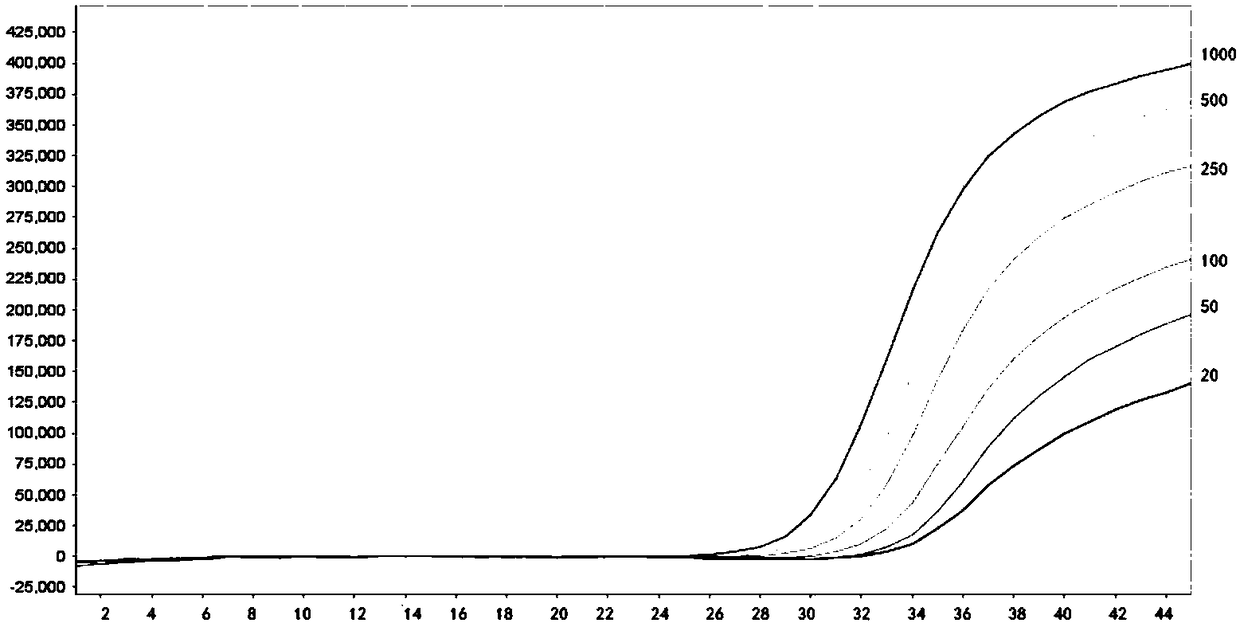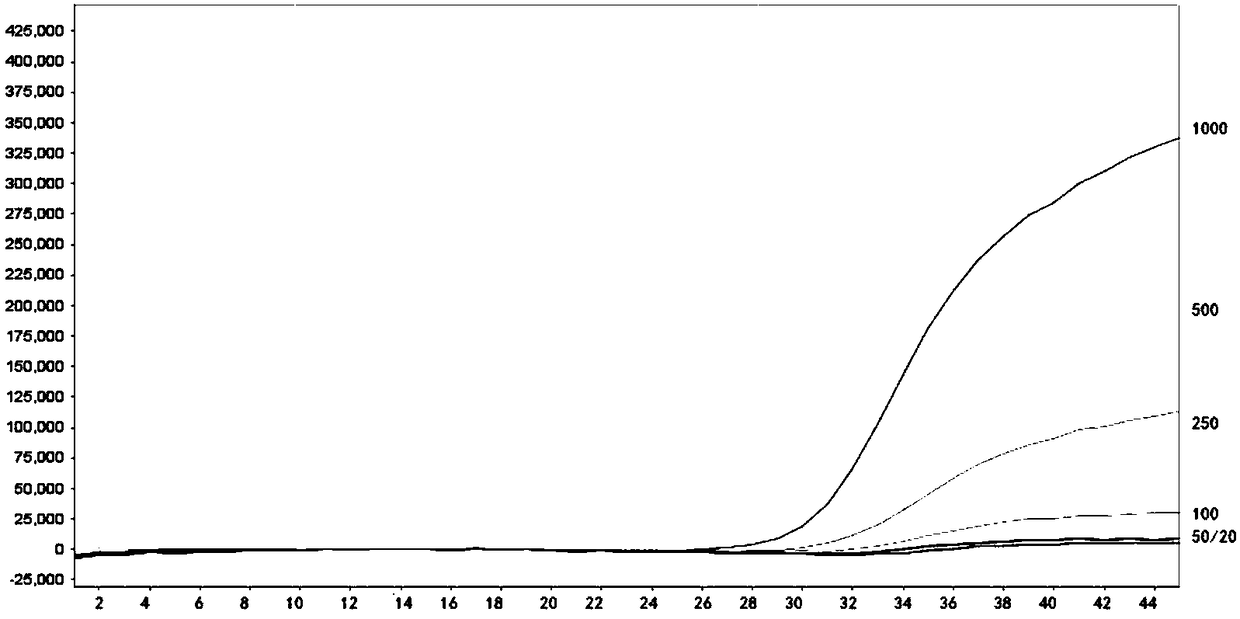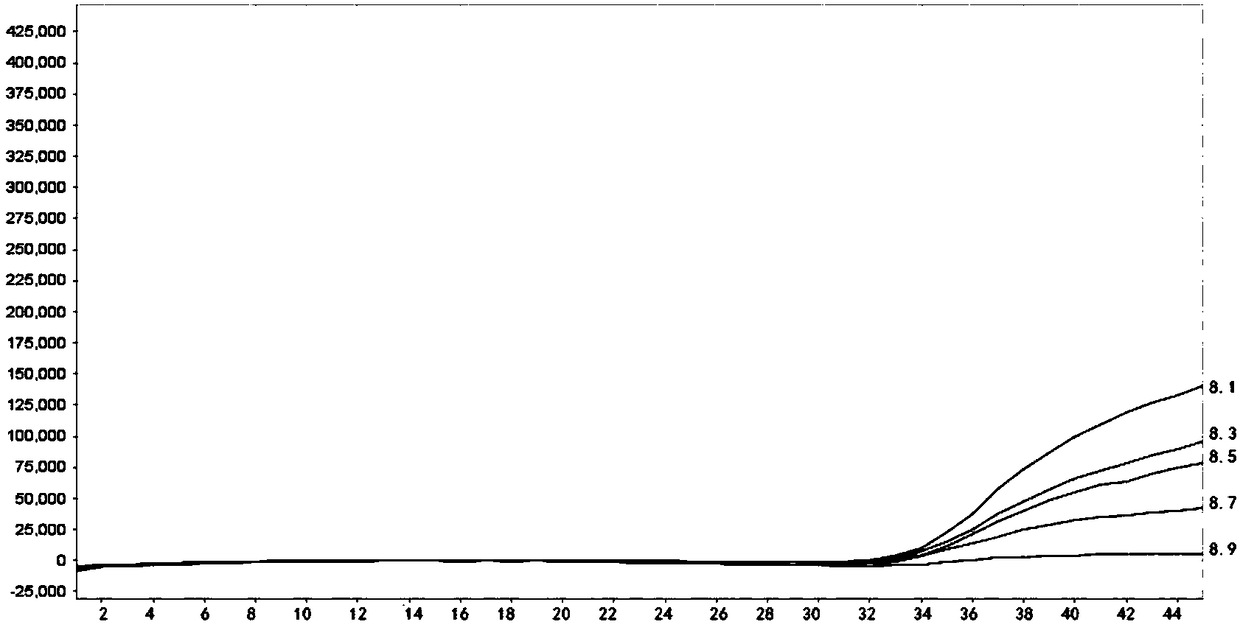A sample nucleic acid detection kit, a sample nucleic acid detection reagent and an application for a sample nucleic acid detection reagent
A detection kit and detection reagent technology, applied in the field of biological science and biology, can solve the problems of reducing the sensitivity and accuracy of sample nucleic acid detection, poor efficiency, and reducing the efficiency of PCR amplification, etc., to facilitate semi-automatic or fully automatic processing, The effect of increasing detection sensitivity and accuracy and improving the efficiency of PCR amplification reaction
- Summary
- Abstract
- Description
- Claims
- Application Information
AI Technical Summary
Problems solved by technology
Method used
Image
Examples
Embodiment 1
[0053] Embodiment 1: nucleic acid detection reagent
[0054] The sample nucleic acid detection reagent in this embodiment includes nucleic acid extraction solution and PCR reaction solution, and its composition is as follows:
[0055] Nucleic acid extraction solution: NaOH 10mM-100mM, Tris-HCl 1mM-25mM, Chelex-100 2%-5% (w / v), EDTA 0.1%-0.4% (w / v), pH=10.5-12.5.
[0056] PCR reaction solution (pH=8.0~9.0), including Tris-HCl 5mM~75mM, in addition to dNTPs, KCl, Mg 2+and a pair of primers. When fluorescent PCR is used for detection, the PCR reaction solution also includes fluorescent dyes such as SYBR Green, or fluorescent probes such as TaqMan, preferably TaqMan fluorescent probes. The PCR reaction solution may also include an enzyme mix. Of course, the enzyme mixture and the PCR reaction solution can also be stored separately, and the enzyme mixture is added to the PCR reaction solution only when nucleic acid amplification reaction is required. When the nucleic acid in th...
Embodiment 2
[0064] Embodiment 2: Sample nucleic acid extraction steps
[0065] Utilize the nucleic acid detection reagent in embodiment 1 to carry out following sample nucleic acid extraction, can be divided into following two kinds of sample nucleic acid extraction methods according to the difference of sample:
[0066] plan 1:
[0067] 1. Take 200 μl of the sample to be tested, add 200 μl of concentrated solution, shake and mix well, and centrifuge at 12,000 rpm for 10 minutes;
[0068] 2. Discard the supernatant, and add 50 μl nucleic acid extraction solution to the precipitation;
[0069] 3. Shake and mix, 100°C water bath or dry bath for 10min, then centrifuge at 12,000rpm for 10min, take the supernatant, which is the extracted sample nucleic acid solution, for PCR amplification, or store at -20°C+5°C for later use .
[0070] Scenario 2:
[0071] 1. Take 100 μl of the sample to be tested, shake and mix, centrifuge at 12,000 rpm for 10 minutes, discard the supernatant, and add 50 ...
Embodiment 3
[0074] Embodiment 3: Fluorescent PCR detection
[0075] 40 μl of PCR detection system, the PCR reaction solution is divided into PCR reaction tubes according to the amount per person, and transferred to the sample processing area. Add 4-20 μl of the sample nucleic acid solution extracted in Example 2 to the corresponding reaction tubes, cap the reaction tubes tightly, and transfer to the detection area for PCR amplification. Put each reaction tube into the PCR instrument in a certain order, set the detection PCR program and detect fluorescence, and perform fluorescence PCR amplification.
[0076] When detecting hepatitis B virus (HBV) in serum or plasma samples, 40 μl of PCR detection system, 20 μl of extracted sample nucleic acid solution, and 20 μl of PCR reaction solution.
[0077] When detecting the human B27 gene in the whole blood sample, 40 μl of the PCR detection system, 4 μl of the extracted sample nucleic acid solution, and 36 μl of the PCR reaction solution.
[00...
PUM
 Login to View More
Login to View More Abstract
Description
Claims
Application Information
 Login to View More
Login to View More - R&D
- Intellectual Property
- Life Sciences
- Materials
- Tech Scout
- Unparalleled Data Quality
- Higher Quality Content
- 60% Fewer Hallucinations
Browse by: Latest US Patents, China's latest patents, Technical Efficacy Thesaurus, Application Domain, Technology Topic, Popular Technical Reports.
© 2025 PatSnap. All rights reserved.Legal|Privacy policy|Modern Slavery Act Transparency Statement|Sitemap|About US| Contact US: help@patsnap.com



